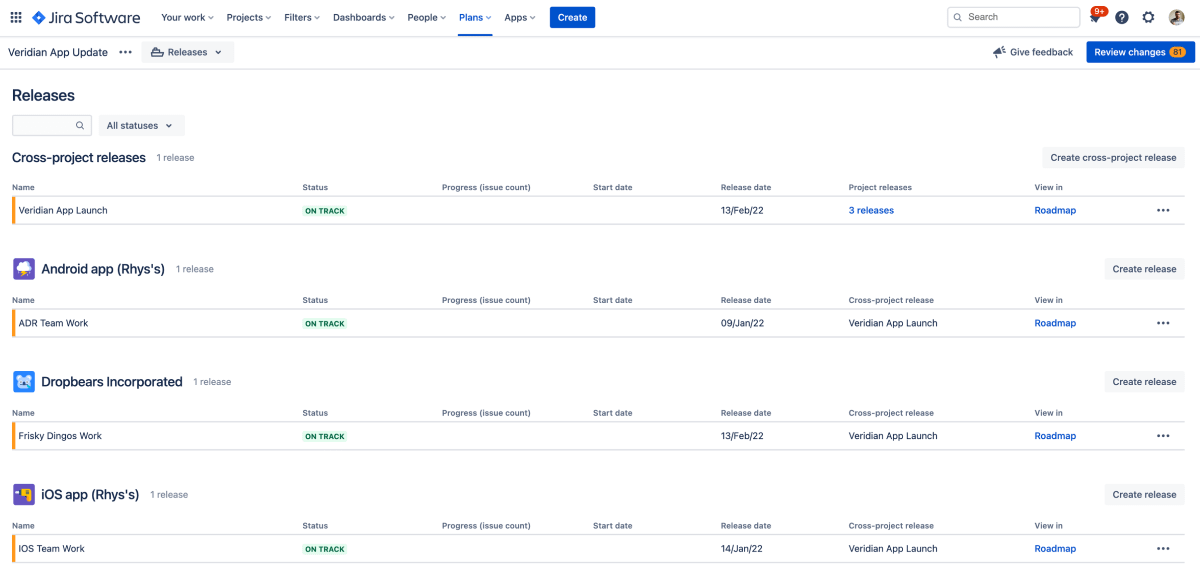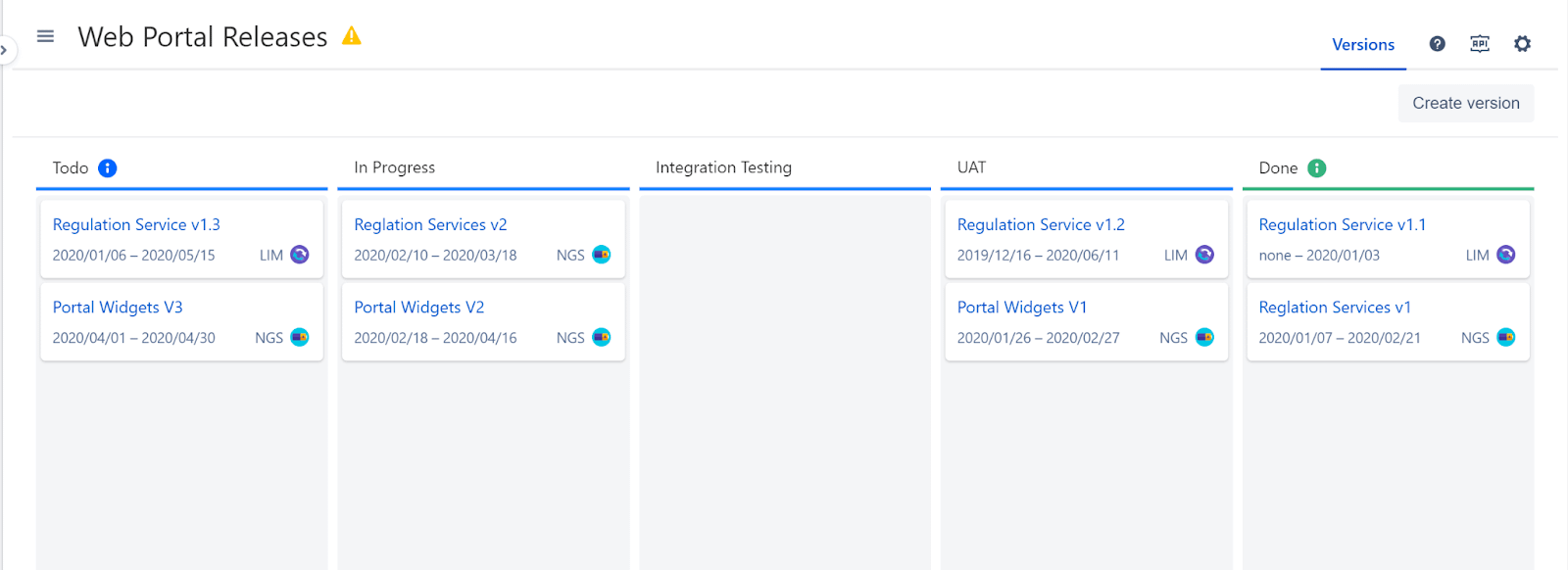Quick Overview
Managing Jira cross-project releases involves consolidating multiple teams, timelines, and deployments into a single, shared plan. This article explains how to handle that using Jira’s native tools, dedicated apps, and some practical coordination habits. You'll see how to keep everything connected from the first planning session to the final deployment.
The views expressed in this article are based on the author's experience and perspective on the topic.
I've been there: multiple engineering teams, all charging towards a shared deadline. Each squad is laser-focused, making great progress in their distinct projects. The individual components look solid. Yet, as the combined release date neared, a familiar tension would build. The quality of individual work wasn't the concern, it was whether everything would truly come together at the finish line.
In large tech organizations, from e-commerce platforms to financial services, it's common to see several squads delivering different parts of the same major initiative. Each team manages its own project, timelines, and specific scope. The challenge arises when these separate streams need to merge into one unified release. That's often when coordinating dependencies and tracking overall progress across multiple projects becomes complex.
If you've felt that pre-release pressure of aligning multiple moving parts, you know exactly what I mean. Over the years, many teams have encountered this pattern and found ways to improve their process. This article is born from those experiences. We want to share practical ways to manage releases that span multiple Jira projects, exploring what a cross-project release in Jira is, making the journey from planning to deployment far less surprising. We'll explore what this means and give you a roadmap for success.
Understanding Jira's Built-In Options
Many of us depend on Jira for day-to-day work management. A core principle to remember is that releases (or "versions") in Jira are project-specific. This means each project manages its own set of versions, visible in their respective Release Hubs, but they operate independently.
This independence is fine for single-project deliveries, but when you have a Jira cross-project release, you need a way to see the bigger picture and manage dependencies.
Using Jira Plans
If you're using Jira Premium, you've got access to Jira Plans. You might know it by its old name, Advanced Roadmaps. This feature lets you connect multiple project versions into a single Jira cross-project release. That way, you can plan and track everything in one place. You choose which versions go into the shared release, set the dates, and manage them in the plan view.

Jira Plans - Create a cross-project release in Jira Cloud
Cross-project releases in Jira Plans are always virtual - they’re only visible within the Plan and don’t exist as actual versions in Jira projects.
Jira Cloud: Cross-project releases never create or update project versions.
Jira Data Center: Committing the plan can create or update the individual project versions linked to the cross-project release.
For more details on setting this up, refer to the Atlassian's documentation on Plans (for Jira Data Center) or Plans (for Jira Cloud).
What to Do Without Jira Plans
What if you're not using Jira Premium? Don't worry, you can still manage a Jira cross-project releases. It requires more manual setup but is quite effective.
Consistent Version Naming: One popular and effective method is to enforce identical and standardized version naming across all participating projects. For instance, "Q3 Major Update 2025" would be created in Project A, Project B, and Project C. You can then use Jira Query Language (JQL) and dashboards to pull together Jira cross-project issues linked to this common version name.
Dedicated Release Tracking Issue: Another approach is to create a specific issue type (e.g., "Release Epic" or "Master Release Tracker") in a central project to represent the entire Jira cross-project release. This central issue then links to all the features, epics, or even project-specific versions contributing to it. This helps in managing Jira cross-project dependencies.
Jira Versions Syncing: Another option is to sync your versions across multiple Jira projects using Jira Automation. Apwide published a guide on Atlassian Community: How to sync Jira versions across projects using Jira Automation. It’s not a perfect solution - version updates and deletions still need a human touch - but for many teams, this setup covers 80% of the pain with 20% of the effort.
These methods provide a way to manually construct a view of your release, though they require discipline in updates.
Using the Release Management App
Now, if your team handles more complex releases or wants something easier to maintain, you might want to look at the Release Management App for Jira. It adds a Jira cross-project board to your setup where you can organize versions from different projects. Like a kanban board, but instead of moving issues, you’re moving versions through stages like Planning, In Progress, QA, Ready, and Deployed.

The Release Management App - Cross Project Releases
Custom Workflows and Automation
You’re not limited to just tracking whether something is released or not. You can define your workflow, set rules for moving versions between stages, and even build in approval steps. For example, you could require that all related issues be completed before a version is marked as ready.
The app also supports automation. It can trigger updates when a deployment is complete or send a message when a version moves to the next stage. You can hook it up to tools like Bitbucket, GitHub, or Jenkins so Jira stays up to date with what’s happening in your pipelines.
Reporting and Efficiency
On top of that, you get reports that show progress across all your versions. It highlights what’s done, what’s still open, and where the blockers are. You can even generate release notes from Jira data, which saves time and keeps communication consistent.
This tool is especially useful when you're managing releases across multiple projects and want a bit more structure without having to create your tracking process from scratch. Everything stays inside Jira, and the visibility across teams improves a lot. It’s also a great way to manage both Jira cross-project dependencies and Jira cross-project issues in a centralized view.
Bringing in Apwide Golive
While the Release Management App helps you organize versions and statuses, Apwide Golive covers the environment side of things. It allows you to define environments such as Dev, QA, Staging, and Production directly within Jira. You can track which version is running in each environment and when scheduled deployments are set to occur.
Environment Management in Jira
It also gives you a timeline view to see all your upcoming deployments and environment bookings. If two teams try to use the same test environment at the same time, Golive catches that conflict for you. You can even reserve environments directly from Jira, so everyone knows when and where a release is happening.
Golive also integrates with your deployment tools. When something gets deployed through Jenkins or Bitbucket Pipelines, that information can automatically update Jira. So you always know which version is in which environment, without needing to chase someone down for the answer.
This powerful environment management capability complements your overall Software Release Management, adding an important operational layer that bridges the gap between planning and execution.
Best Practices for Managing Cross-Project Releases
Sure, tools and platforms are great for managing releases, but you know what really makes things work? Having clear processes that everyone understands and sticks to.
Conclusion
Managing releases across multiple Jira projects isn’t always simple, but it doesn’t have to be messy. Whether you stick with Jira Premium, use Marketplace Apps, or combine both, you’ve got options that can support your process. What matters most is giving your team clarity on what’s happening, when it’s happening, and where things stand. When that’s in place, any Jira cross-project release becomes easier to track and deliver with fewer surprises.
Key Takeaways
- Define a shared release structure across projects using Jira Plans or by syncing them. to align all teams on the same delivery goal.
- Use the Release Management App to track version progress, apply custom workflows, and automate updates for better visibility and control.
- Track environments with Apwide Golive to manage deployments, avoid conflicts, and keep everyone informed about what is running where.
- Align teams regularly by reviewing a single source of truth, linking dependencies, and using dashboards to monitor progress across all projects.
- Automate wherever possible using Jira Automation and integrations to reduce manual updates and maintain real-time release status.



